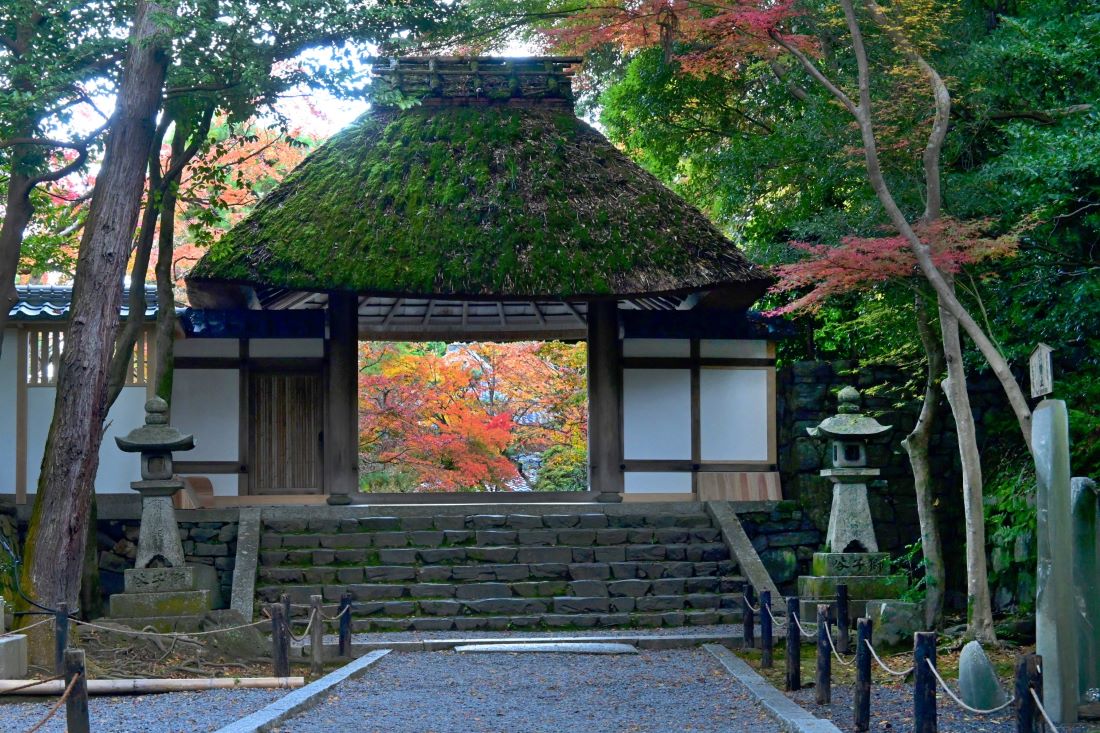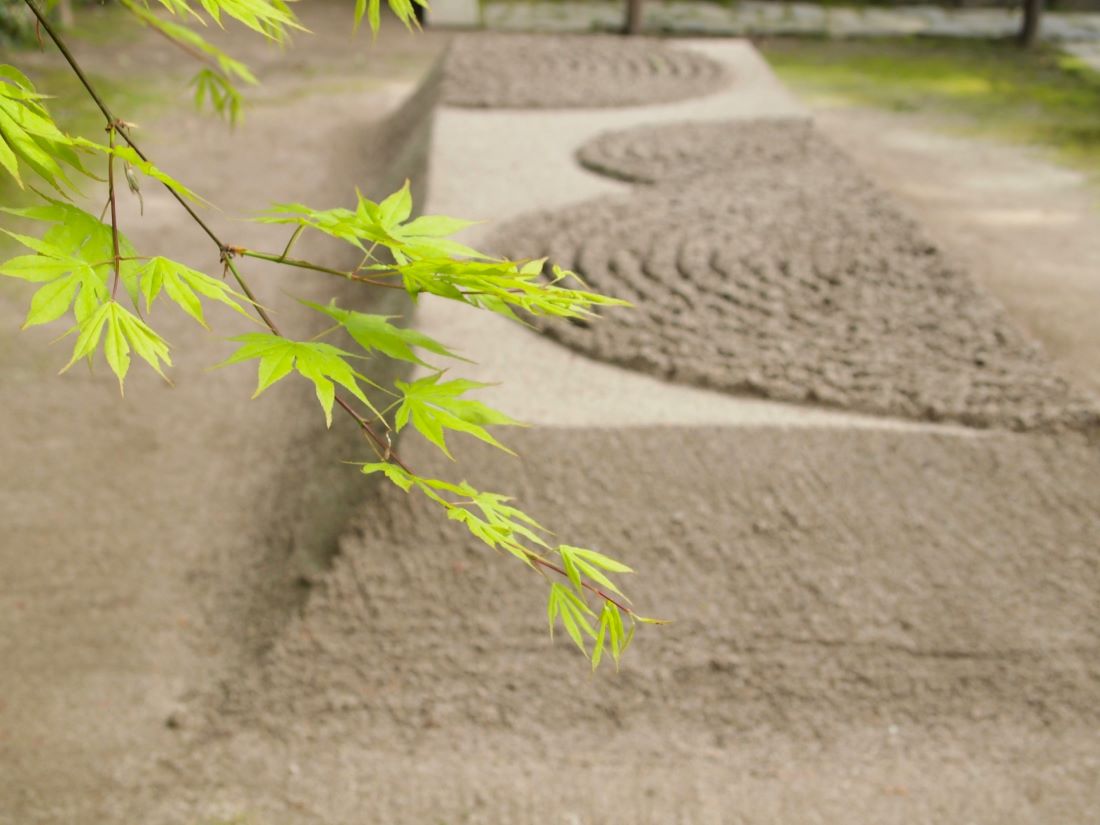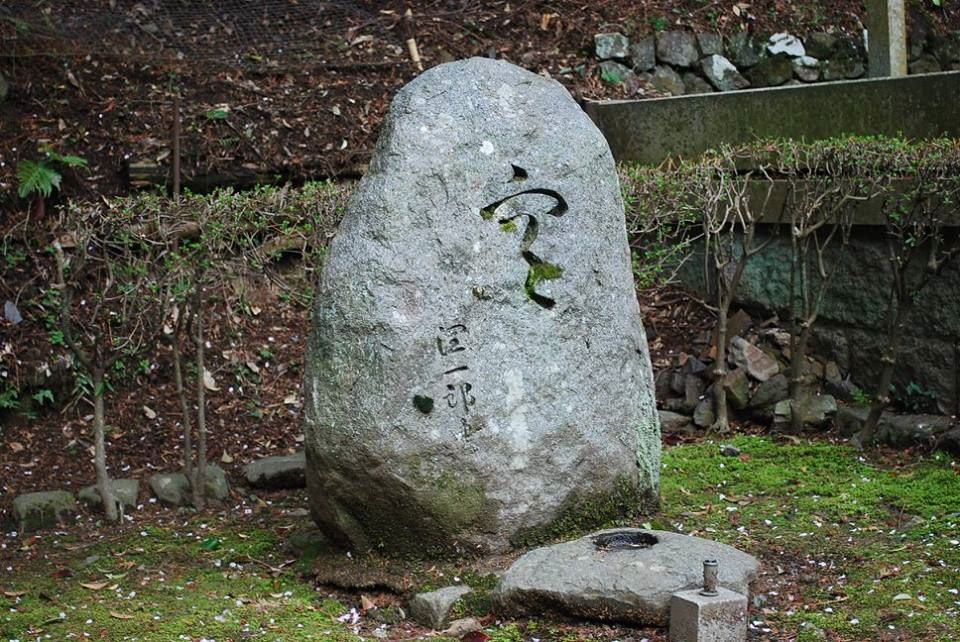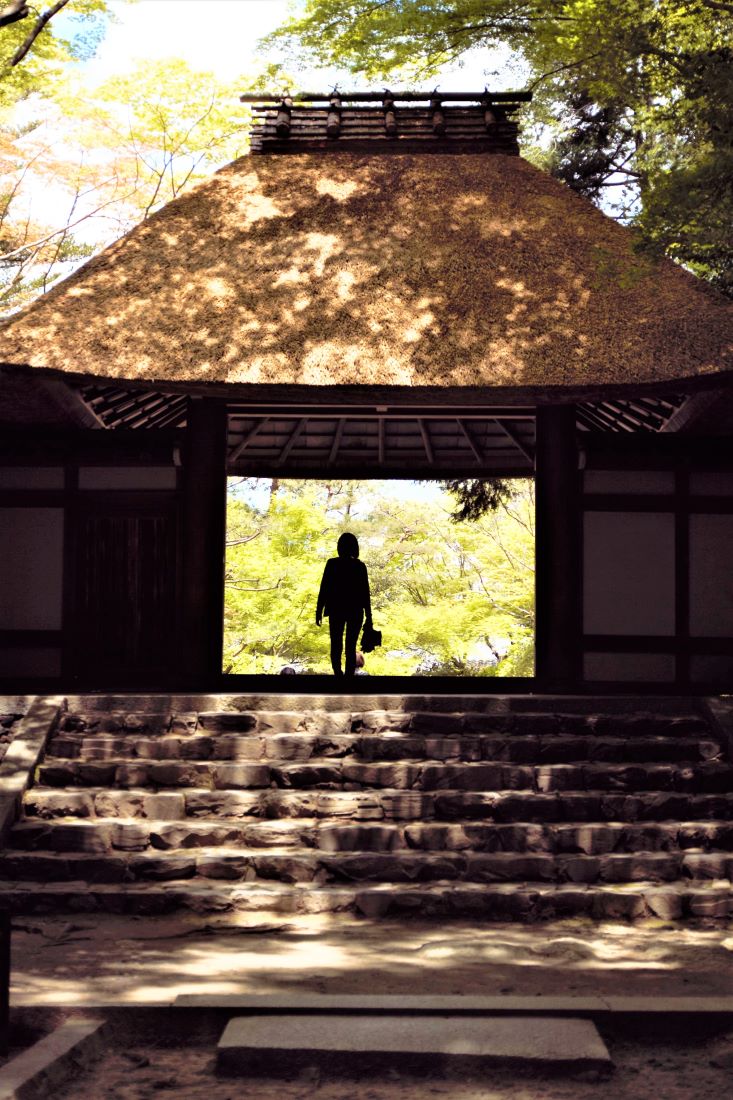Honen-in Temple is a beautiful and serene Buddhist temple in the eastern mountains of Kyoto, Japan. The temple was founded in 1680 by the monk Genno, who was a disciple of the famous monk Honen. It is named after Honen, who was a prominent figure in the development of the Pure Land school of Buddhism.
It’s also along Kyoto’s wonderful philosopher’s path walking route and makes a great place to drop by to take in the serenity.

The temple is known for its peaceful atmosphere and beautiful gardens, which are filled with cherry blossom trees, maple trees, and other plants that change with the seasons.
You can stroll through the gardens and admire the natural beauty, or sit in one of the many meditation areas and reflect on your thoughts.

The temple also has a main hall, which houses a statue of Honen and other important Buddhist artifacts.
History

Honen-in Temple is a Buddhist temple in the eastern part of Kyoto, Japan. It was founded in 1680 by the priest Genno, who was a disciple of Honen, the founder of the Jodo sect of Buddhism.
This temple is known for its beautiful gardens that were designed by the famous landscape architect Mirei Shigemori. However, the history of Honen-in Temple goes back much further than the 17th century.

Originally built in 1680 as a place for the priests to practice their meditation and study the teachings of Honen, Over the years, it has undergone many renovations and expansions.
During the Edo period, the temple was patronized by the Tokugawa shogunate, and many of its buildings were rebuilt or refurbished.
During World War II, Honen-in Temple was severely damaged by bombing, and many of its buildings were destroyed. However, the temple was later restored to its former glory, and today it is one of the most popular tourist attractions in Kyoto.
It is also a popular place for locals to come and meditate or enjoy the peaceful surroundings.

One of the most interesting features of Honen-in Temple is the famous “Moss Garden.” This garden is filled with over 120 different species of moss and is considered one of the most beautiful gardens in Japan. The garden is also home to several ancient stone lanterns and other stone artifacts that date back to the Edo period.

Another interesting feature of Honen-in Temple is the “Sutra Library.” This library contains over 1,000 Buddhist sutras, which are ancient texts that contain the teachings of the Buddha. The library is open to the public and visitors are welcome to come and read the sutras or explore the many other artifacts and treasures that are housed within the temple.
Architecture

The temple was built in the 17th century and features stunning wooden structures with intricate details and designs. The architecture of Honen-in Temple is characterized by its simplicity, elegance, and harmony with nature.
The main hall of the temple is a single-story structure with a thatched roof and wooden pillars. The interior of the hall is adorned with beautiful paintings and calligraphy, and houses a statue of Honen, the founder of the Pure Land sect of Buddhism. The hall is surrounded by a beautiful garden, which is designed to reflect the changing seasons.

One of the most unique features of Honen-in Temple is its moss garden. The garden is covered in a thick layer of moss, which creates a peaceful and serene atmosphere. The moss garden is surrounded by a beautiful rock garden, which is designed to represent a river flowing through the mountains.
The temple also features a beautiful tea house, which is a perfect example of traditional Japanese architecture. The tea house is made of wood and features a thatched roof, sliding doors, and tatami mats. You can enjoy a cup of tea while taking in the beautiful surroundings.
The temple’s simple yet elegant structures, beautiful gardens, and unique features make it a worthwhile destination for anyone interested in Japanese culture and architecture.
Gardens

Honen-in Temple is known for its beautiful gardens that are designed to reflect the changing seasons and there are several gardens that are spread across the temple grounds. Each garden has a unique design and features different types of plants and flowers.
The main garden at Honen-in Temple is the Pure Land Garden, which is in front of the main hall. The garden is designed to represent the Pure Land, which is the Buddhist equivalent of heaven. The garden features a large pond with several small islands, and trees and plants that are carefully arranged to create a peaceful and harmonious atmosphere.
Another notable garden at Honen-in Temple is the Moss Garden, which is at the back of the temple. The garden is covered in a thick layer of moss, which gives it a serene and mystical feel. The garden features several stone lanterns, a small stream, and trees and plants that are carefully selected to complement the moss.
In addition to these gardens, Honen-in Temple also has a Bamboo Grove, which is a small forest of bamboo trees that is near the entrance of the temple. The Bamboo Grove is a popular spot those to take photos and enjoy the natural beauty of the temple grounds.
Cultural Significance
Honen-in Temple is a significant cultural landmark in Japan, known for its deep ties to Buddhism and Japanese history. The temple has been around for centuries, and its importance has only grown over time. Here are a few reasons why Honen-in Temple is culturally significant:
- Buddhist Heritage: Honen-in Temple was founded by Honen, a Buddhist monk who lived during the late Heian period in Japan. Honen is known for founding the Jodo-shu sect of Buddhism, which emphasizes the importance of chanting the name of Amitabha Buddha as a means of attaining enlightenment. The temple is a testament to Honen’s teachings and his influence on Japanese Buddhism.
- Historic Architecture: The temple’s buildings are a blend of traditional Japanese and Chinese architecture, and are considered to be some of the best examples of the “shoin-zukuri” style of Japanese architecture. The buildings are made of wood and feature intricate carvings and paintings that reflect the temple’s history and cultural significance.
- Nature and Zen: Honen-in Temple is in a tranquil forested area, and its grounds are designed to promote a sense of serenity and calm. The temple’s gardens are meticulously maintained and feature plants and trees that are important in Japanese culture, such as cherry blossoms and maple trees. The temple is a popular spot for meditation and reflection, and is a reminder of the importance of nature and Zen in Japanese culture.
Visiting Honen-in Temple

Overall, a visit to Honen-in Temple is a must for anyone looking for a peaceful and serene experience in Kyoto.
| Information | Details |
|---|---|
| Name (English) | Honen-in Temple |
| Name (Japanese) | 法然院 |
| Address | 30 Shishigatani Goshonodancho, Sakyo Ward, Kyoto, 606-8427, Japan |
| Cost | Free |
| Times | 6:00 AM – 4:00 PM (Gates close at 4:00 PM) |
| Website (Japanese) | http://www.honen-in.jp/ |
| Nearby Hotels | Luxury: |
| 1. The Ritz-Carlton Kyoto (3.6 km) | |
| 2. Four Seasons Hotel Kyoto (3.1 km) | |
| Mid-range: | |
| 1. Kyoto Yura Hotel MGallery (3.4 km) | |
| 2. Solaria Nishitetsu Hotel Kyoto Premier (3.6 km) | |
| Budget: | |
| 1. Guesthouse Soi (0.4 km) | |
| 2. Guest House Oumi (1.0 km) |






